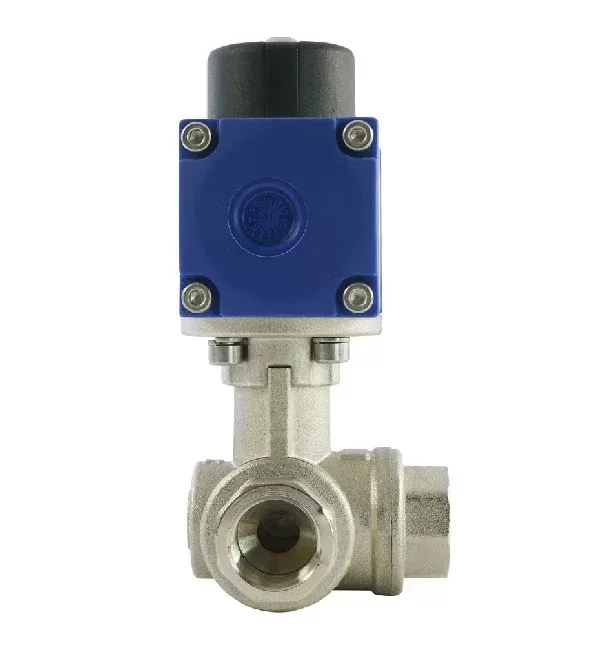Notifications

4 minutes, 37 seconds
-14 Views 0 Comments 0 Likes 0 Reviews

In the ever-evolving world of industrial automation, efficiency, reliability, and precision are paramount. The introduction of the pneumatically controlled 3-way ball valve (L-port) marks a major leap forward, replacing manually operated valves with a solution designed for seamless integration into modern automated systems. With a 10 mm diameter and a wide operating temperature range (-10 to 100°C), this China Control Valve proves to be a versatile powerhouse for a range of liquid and gas applications.
At the core of this innovation is a robust pneumatic actuator, delivering 9.92 Nm of torque at 8 bar and operating reliably between 6 to 10 bar control pressure. Its G 3/8" threaded connections allow easy integration, while a Kv value of 3 m³ ensures optimal flow.
The double-acting, aluminium rack-and-pinion actuator provides rapid, precise control, outperforming traditional single-acting designs. Housed in anodized aluminum and protected by an acetal resin cover, the actuator offers outstanding durability and corrosion resistance. Meanwhile, the valve itself features a brass housing and PTFE seals, handling media pressures up to 40 bar and ensuring long-term performance even in demanding environments.
This 3-way valve stands out with direct Namur solenoid valve mounting, thanks to G1/8 ports for air supply and return. Installation becomes faster, cleaner, and more reliable — with fewer fittings and potential leak points. A mechanical indicator on the actuator ensures quick, easy visual status checks.
Safety is critical in industrial environments, and this valve meets the challenge. ATEX (EX II 2GD c) certification guarantees it can safely operate in explosive atmospheres, giving operators total confidence.
While electric actuators are a popular choice, the 3-way pneumatic ball valve presents a cost-effective alternative. Its lower initial investment, combined with rapid actuation and precise control, maximizes system efficiency.
Note: Double-acting actuators consume more compressed air compared to single-acting ones, leading to slightly higher operational energy costs. Also, a compressed air system and solenoid valve are needed for full operation — factors that should be considered in system design.
For applications requiring real-time monitoring, the valve can be equipped with a limit switch box, providing feedback on valve position and enabling even finer integration into automated processes.
Direct Namur Solenoid Mounting: Simplifies installation and reduces components.
Mechanical Indicator: Enhances operational visibility.
ATEX Certified: Safe for explosive environments.
Lower Initial Investment: Affordable compared to electric actuators.
Fast Operation: Improved responsiveness.
Double-Acting Precision: Greater control over flow regulation.
Limit Switch Box Compatibility: Adds intelligent feedback capability.
Higher Compressed Air Consumption: Potential for increased energy costs.
Needs Compressed Air System: Infrastructure may need upgrades.
Ongoing Energy Costs: Can be higher compared to purely electric solutions.
The 3-way pneumatic ball valve is a game-changer in fluid control, striking the perfect balance between performance, safety, and cost-effectiveness. Its robust design, seamless integration features, and certifications make it an ideal fit for industries pushing toward smarter, faster, and more reliable automation.
For businesses aiming to modernize without incurring the heavy costs of electric actuator systems, this valve provides a future-ready and pragmatic solution.
In a world where precision is power, the 3-way pneumatic ball valve leads the charge in industrial innovation.Know more about Google SEO Directory
